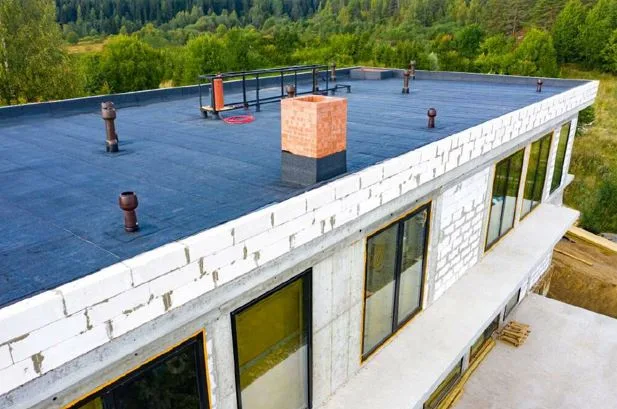Why Waterproofing Membrane Is Essential for Protecting Your Home
When it comes to maintaining your home, one of the most important aspects that often gets overlooked is waterproofing. Whether you’re building a new home or renovating an existing one, waterproofing membrane plays a crucial role in safeguarding your property from water damage. Water can seep into your floors, walls, and foundations, causing structural damage, mold growth, and increased repair costs.
In this post, we’ll dive into what a waterproofing membrane is, why it’s necessary, how to choose the right one, and how it helps protect your home from the devastating effects of water damage.
What is a Waterproofing Membrane?
A waterproofing membrane is a protective barrier that prevents water from penetrating surfaces. It is applied to various surfaces like floors, walls, roofs, and foundations to keep moisture out. These membranes can be made of different materials such as bitumen, rubber, or polymer-based compounds, each designed to form a barrier against water infiltration.
Waterproofing membranes can be applied in various forms:
- Sheet Membranes: These are large, flexible sheets of material applied directly to the surface. They provide continuous protection and are ideal for large areas like floors and walls.
- Liquid Membranes: Liquid membranes are spread onto surfaces and left to dry, forming a seamless barrier. They’re often used for areas with complex shapes or joints.
- Cementitious Membranes: These are a combination of cement and waterproofing additives. They are applied like a coating and are commonly used in basements or other wet areas.
The primary function of a waterproofing membrane is to create an impermeable layer that prevents moisture from penetrating the material beneath it, ensuring that your property remains safe from water damage.
Why is Waterproofing Membrane Important?
Water damage is one of the leading causes of property deterioration. Even small amounts of water can cause significant damage over time. Here’s why using a waterproofing membrane is essential:
- Prevents Structural Damage: Water infiltration can weaken structural components of your home, such as wood, metal, and concrete. Over time, water can cause rusting, rot, and cracking. A waterproof membrane keeps your property’s foundation, walls, and floors safe from moisture-related damage.
- Mold and Mildew Prevention: Excess moisture in your home creates the perfect breeding ground for mold and mildew. These harmful fungi can damage surfaces, cause unpleasant odors, and even lead to health problems. A waterproofing membrane prevents water from seeping in, keeping your home dry and mold-free.
- Increases Longevity: By using a waterproofing membrane, you extend the life of your building materials and structures. It’s much more cost-effective to prevent water damage upfront than to deal with costly repairs down the road.
- Improves Energy Efficiency: Waterproofing membranes also provide insulation benefits. By preventing water infiltration, they help maintain stable indoor temperatures, reducing your heating and cooling costs.
- Protects Your Investment: Whether you’re building a new home or maintaining an existing one, using a waterproofing membrane ensures that your property remains in good condition. It helps protect your investment by preventing water damage and maintaining the integrity of your home.
How Does Waterproofing Membrane Work?
A waterproofing membrane works by acting as a barrier between your home and the elements. It prevents water from infiltrating the surfaces and materials it is applied to, which keeps the structure dry and secure.
Here’s a simple breakdown of how it works:
- Seals the Surface: The membrane creates a seamless, watertight layer on the surface, preventing water from passing through.
- Flexibility: Waterproof membranes are designed to expand and contract with temperature fluctuations, maintaining their effectiveness over time.
- Protection Against Hydrostatic Pressure: Waterproof membranes can withstand the pressure of water buildup, especially in areas like basements or foundations that are prone to flooding or water seepage.
Where Should You Apply Waterproofing Membrane?
Waterproofing membranes are ideal for areas where moisture is prevalent. Here are the most common places to apply a waterproofing membrane:
- Basements: Basements are particularly vulnerable to water seepage due to their location below ground level. A waterproofing membrane applied to the basement walls and floor helps prevent leaks and water damage from flooding or heavy rains.
- Bathrooms: Bathrooms are consistently exposed to water, whether from showers, bathtubs, or sinks. Waterproofing your bathroom floors and walls helps prevent mold growth and protects the structure from water damage.
- Roofs and Balconies: Roofs and balconies are constantly exposed to the elements. A waterproofing membrane helps protect these areas from rain, snow, and even UV rays that can cause wear and tear over time.
- Kitchens: Like bathrooms, kitchens are prone to water exposure, especially around sinks, dishwashers, and refrigerators. A waterproofing membrane can protect the floor and walls from water damage.
- Outdoor Areas: If you have outdoor spaces like patios, terraces, or balconies, applying a waterproofing membrane ensures that these areas are protected from the elements. It also helps prevent water from penetrating the underlying structures.
Choosing the Right Waterproofing Membrane
Not all waterproofing membranes are created equal, and choosing the right one depends on the area you need to protect. Here are a few things to consider when selecting a waterproofing membrane:
- Material Type: Different membranes are made from various materials, such as bitumen, rubber, and polymer-based compounds. The best choice depends on the surface being protected and the level of water exposure.
- Application Method: Some membranes are applied as sheets, while others are liquid-based and can be brushed or rolled onto the surface. Depending on the space and the surface, one type may be easier to apply than the other.
- Durability: Consider how long the waterproofing membrane will last. High-quality membranes should offer long-lasting protection against water damage, with minimal maintenance required.
- Climate and Conditions: Choose a waterproofing membrane that’s suitable for your climate and environmental conditions. For instance, membranes used in areas with heavy rainfall or extreme temperatures should be more durable and flexible.
- Ease of Installation: Some membranes are easier to apply than others. If you’re doing a DIY project, you might want to go with a liquid membrane or an easy-to-install sheet membrane.
Why Choose Atech Products for Your Waterproofing Membrane Needs?
At Atech Products, we offer a wide range of high-quality waterproofing membranes designed to provide long-lasting protection for your property. Here’s why our waterproofing solutions stand out:
- High-Quality Materials: Our membranes are made from durable, long-lasting materials that provide superior protection against water damage.
- Easy to Apply: Whether you’re a professional or a DIY enthusiast, our waterproofing membranes are simple to install and apply.
- Affordable Protection: We offer competitive prices, ensuring that you get top-notch waterproofing protection without breaking the bank.
- Trusted by Professionals: Our waterproofing membranes are trusted by contractors, builders, and homeowners for their effectiveness and reliability.
For more information on our waterproofing membrane products, visit Atech Products Waterproofing Membrane.
Final Thoughts: Protect Your Property with a Waterproofing Membrane
Waterproofing your home with a waterproofing membrane is one of the most effective ways to protect your property from water damage. Whether you’re dealing with a basement, bathroom, or roof, using a waterproofing membrane helps maintain the integrity of your building and prevents costly repairs down the line.
At Atech Products, we provide high-quality waterproofing membranes that offer reliable protection for all types of surfaces. Don’t wait for water damage to occur—protect your property today by investing in a waterproofing membrane.






